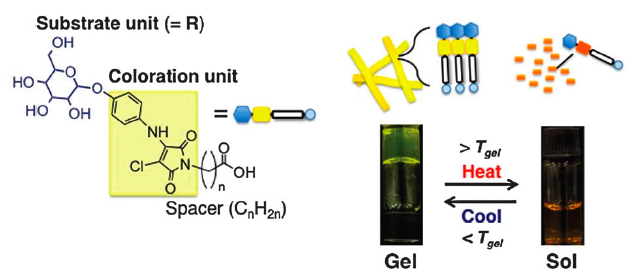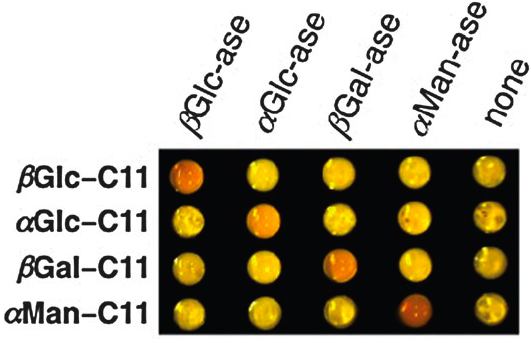Gels that are held together by non-covalent interactions are a hot topic in supramolecular chemistry. In this Communication, Itaru Hamachi’s research group from Kyoto University report a series of glycolipids that form yellow hydrogels from orange suspensions when heated. The gelation and hence the colour change is reversible, and the authors hoped to use this response to create a sensor system.

Once the gel has formed, adding a glycosidase enzyme which can selectively cleave the β-glucosidic bond leads to breakup of the gel and a colour change from yellow to orange. This response is only observed with an enzyme that is complimentary to the saccharide used as a “substrate unit” in the gelator. Hence, the authors have harnessed natural enzyme-substrate selectivity to yield a highly selective sensing system. The combination of a number of these gels into a sensor array chip yields a system that can simply and rapidly detect and distinguish a range of glycosidase enzymes. The ability to selectively sense these enzymes could have significant application for diagnosing disease and identifying bacterial contamination of drinking water.

Read this ‘HOT’ ChemComm article today:
Rika Ochi, Kazuya Kurotani, Masato Ikeda, Shigeki Kiyonaka and Itaru Hamachi
Chem. Commun., 2013, 49, 2115-2117
DOI: 10.1039/C2CC37908B










